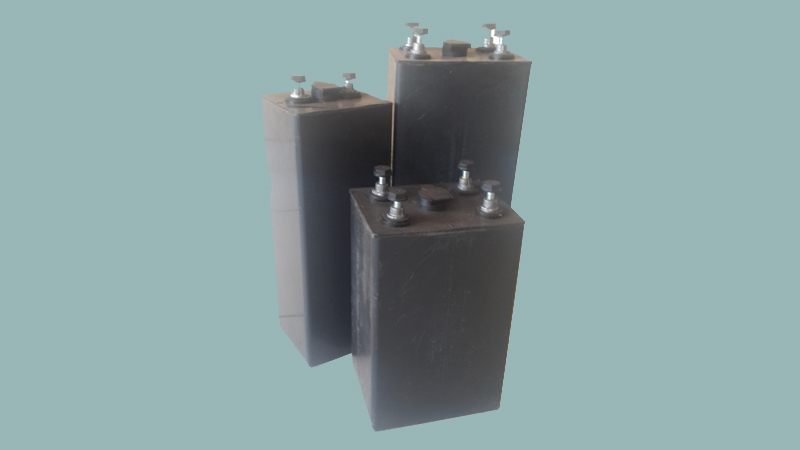In this week’s installment of GOING SOLAR we shall take a last look at the solar or deep discharging battery.
Today we are going to take a last look at the battery and then combine what we have so far, the SOLAR PANEL, CHARGE CONTROLLER and BATTERY and size a basic 12 volt DC power system.
In our last look at the battery, we felt we should summarise and share a few important notes about batteries. Consider these the basic rules to the design, use and maintenance of a solar battery bank:
- As a rule: (Try hard NOT to break this one), plan to be able to use – at most – about 50% of a manufactures stated battery capacity at the C20 rate. More than this constitutes a pretty heavy discharge and WILL reduce the lifespan of your battery bank drastically.
- Battery life is determined by the number of cycles. A battery has a greater total capacity if it is discharged slowly and not so deeply. Consequently discharging the battery to 30% is good, but doing it while drawing a lot of power from it, will reduce its lifespan too.
- The batteries in your solar system should not remain in the discharged state for a long period of time, as this will affect capacity and lifetime of the battery bank due to sulphation and electrolyte breakdown. If you need to store the batteries, new or used, be sure to charge them fully every six months.
- Certain batteries such as flooded or wet cell batteries need to be watered regularly. Please ensure that you always use distilled or battery water without any impurities. Make sure to not overfill the battery. Add enough water to only cover the cells
- Regular inspections are necessary to ensure the batteries remain in a good state. It is recommended to inspect your batteries on a monthly basis. While doing the monthly inspections, make sure that:
- Battery tops in flooded type batteries are clean, dry and free of any dust
- Vent caps are clean and tight especially with sealed batteries
- Battery terminal connections are tight and free of any sulphate powder – if present clean away with warm water, dry and apply a light coat of grease or petroleum jelly (Vaseline).
- Battery cables are in a proper state. Change any damaged cables if necessary.
Now that’s that about the battery, for more information please email us at tech@clamorepower.com.
With the basic knowledge that we now have, about the SOLAR PANEL, CHARGE CONTROLLER and BATTERY, let’s design a basic DC lighting system.
Assuming we want to power 3 x 5 watt lights for 5 hours per night, let us do the simplified calculations to determine the solar panel size, regulator size and battery size. Again to make this easier to understand we are going to assume a perfect system with no power loses. First thing we need to do is figure out how much power we need.
The total power required will be:
Total light capacity15 watts
Total usage time 5 hours
Total consumption 15 x 5 = 75 watt/hours
Remember our solar panel needs to replace the 75 watt/hours used, in approximately 5 hours of daylight. This being the case how much must the panel produce in an hour?
That would be: The total power required (75w/hrs) divided by the number of hours available (5) giving us a total 15 watts of appropriate solar panel size.
If we go back to the charge controller article, we will remember that to determine the size of the charge controller we simply take the panel size and divide it by the systems peak voltage. In this case, a 12vdc solar panel peaks at 15vdc.
Our regulator will then be 15 watts panel divided by 15vdc peak voltage giving us a charge controller/regulator size of 1 amp.
Knowing our consumption to be 75w/hrs is the basis of sizing our battery, have a look at last week’s article. The first thing is to assume that the 75w/hrs consumed is the maximum allowed 50% of the battery bank. This would mean that our battery holds a total 150w/hrs of power. To get this back to the industry standard of Ah rating we divide the capacity in W/Hrs by the system voltage in this case 12vdc. Our battery size is thus 12.5Ah
In conclusion, to provide 5 hours of lights at 5 watts each we will need:
1 x 15 watt solar panel
1 x 1 amp charge controller
1 x 12.5Ah battery at 12 volts.
As it may not be possible to get these commercially, you may need to get the next best size. In this case always purchase the next size up . . . but NOT too far up.
That concludes our basic discussion around the battery bank and sizing a small DC solar power system. Next week we shall start looking at the Power Inverter.
Have a great Easter Break ahead, and remember “two is too much when 1 will do”, keep safe and see you next week.
Please keep sending your questions to us at tech@clamorepower.com. The more you communicate with us the better placed we will be to offer clearer and simpler answers that will help you. You can also visit our FAQ page for more information.

One response
Please kindly send me information on GOING SOLAR to the following email address: musaemanuelt@gmail.com